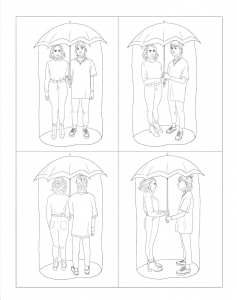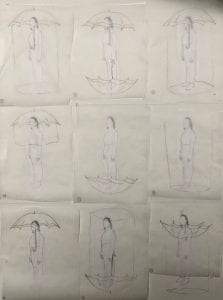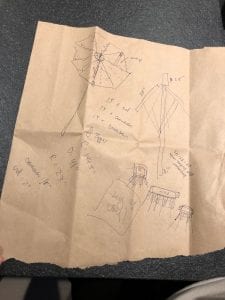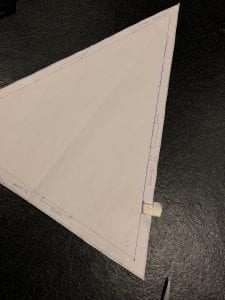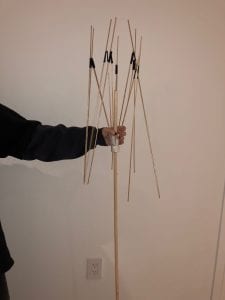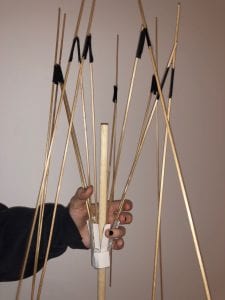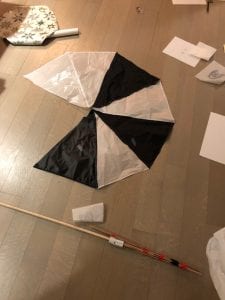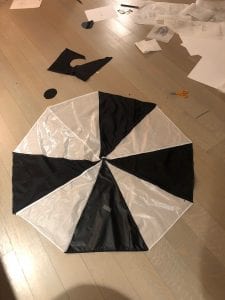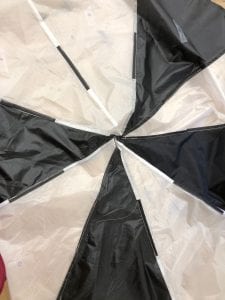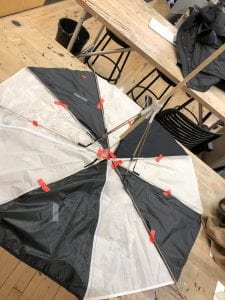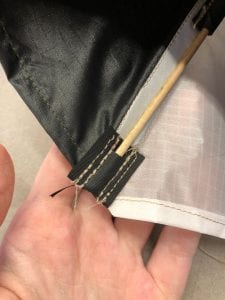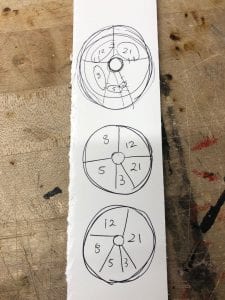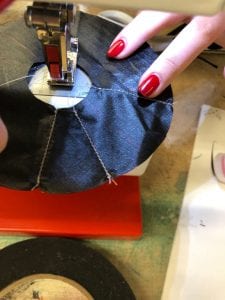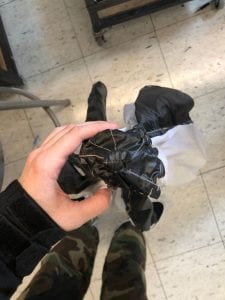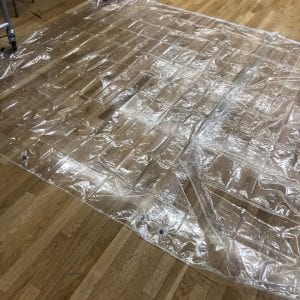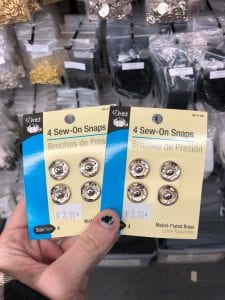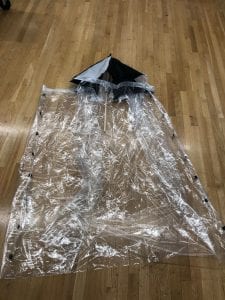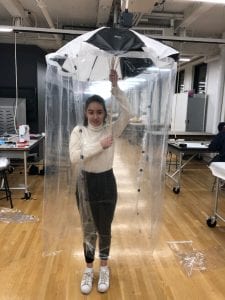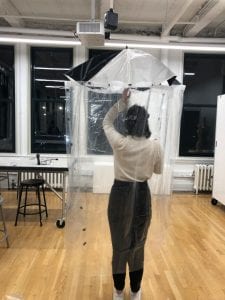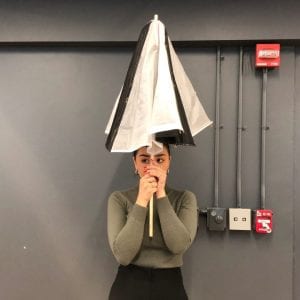Four-view drawing of the designed ‘shared space’
Nine-step drawing of the transformative umbrella/ ‘shared space.’
The rough-draft draw plans for the execution of the umbrella and its cantilever; the majority of the inspiration for the design and mechanisms for our shared space came from a cocktail umbrella. Measurements and other notes such as ideal materials etc are written down one the rough draft above.
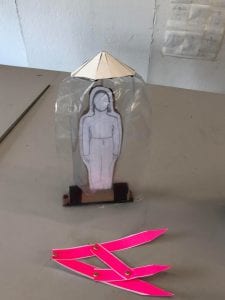
The ‘mini model’ of myself that stands at a 16:4 ratio and is modeled with the ‘working’ shared space and example of the fibonacci sequence.
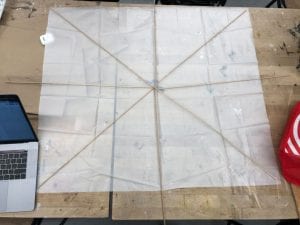
Figuring out the dimensions of the umbrella and determining how much material we needed to construct the overall membrane of the umbrella. At this stage we also determined set measurements for the entire umbrella based off the circumference, diameter, and radius for the umbrella.
The umbrella membrane pattern for one triangle of the membrane.
The skeletal ‘bones’ of our umbrella with the cantilever mechanism. Utilizing techniques learned from the second kite [air-born] project, we used cross spar pockets to attach the stretchers to the ribs.
Close up detail shot of the skeletal ‘bones’ of our umbrella.
The process of french seaming each triangle together to create the full umbrella membrane was a taxing and time consuming process.
Assembling the umbrella membrane.
Assembling the umbrella membrane.
The fully sewn umbrella membrane!
Attaching connectors made of dacron to the umbrella membrane in order for the ribs to be attached.
Inserting the ribs into the connectors attached on the membrane and determine where the end-pockets (also made of dacron) would be attached on the membrane. At this stage, we also cut off the excess from each rib that we had to ensure that everything was even and aligned properly.
The attached end-pocket on the umbrella membrane.
The planning stage of the fibonacci sequence on our umbrella. We were inspired by the spiral shapes that the fibonacci sequence that occurred inn nature and water to incorporate it into the top cap of our umbrella. We created our own measurement system instead of centimeters or inches which allowed for Caitlin and I to emulate the fibonacci sequence.
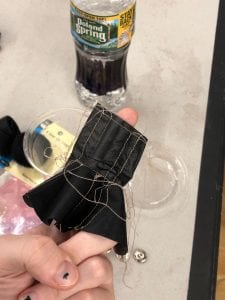
This was our first umbrella end-cap that was made too wide. It was a trial run that allowed for Caitlin and I to make adjustments in our design and helped us realize how we could better utilize the fibonacci sequence.
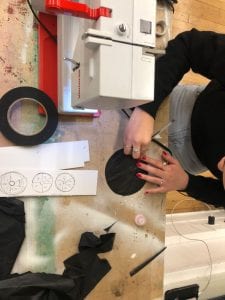
Beginning the final umbrella end-cap.
Sewing the fibonacci sequence onto the end-cap made of the same material that the umbrella membrane is made of.
The final umbrella end-cap with the embedded fibonacci sequence attached onto the membrane of umbrella.
The shower curtain that we repurposed that we used for the shared-space function of the umbrella. By implementing velcro onto the sides of the shower curtains (we used two) we were able to recycle these curtains and make them work for the shared space.
These were the snaps that were sewn onto the umbrella membrane in order to attach the shower curtains to the membrane, transforming the umbrella into a protective shared space.
The umbrella laid flat with the attached protective, water-proof ‘bubble’ component that was designed to increase the protection that an umbrella could offer in keeping an individual fully dry.
Front view of the umbrella.
Back view of the umbrella.
The umbrella without the detachable ‘bubble component.’
Written Reflection:
Project Tittle: ‘The Kite 2.0″
1. What is the wearable form? (garment – torso-oriented) and what does this transform into? (bag/table/etc.)
The form is a standard parasol inspired umbrella that transforms into a shared space once the protective, water-proof ‘bubble’ component is attached to the umbrella membrane, increasing the protection that an umbrella could offer in order to keep the individual or individuals fully dry from the rain or other types of harsher weather.
2. What is the intended function of this SHARED SPACE?
Referring back to my fore-mentioned point above (see question one), the intended function of the created shared space is in line with that of any standard umbrella, however, the added attachment of the water-proof ‘bubble’ component extends the intended function and allows for two people to effectively and effectively stay dry and protective from the elements.
3. Where is the Fibonacci sequence in the design and how did using the forms change your project?
The Fibonacci sequence was implemented into the design of our ‘shared space’ in the form of a circular end-cap at the top of the umbrella. Inspired by the Fibonacci sequences occurrence throughout nature, we wanted to use the symmetrical, spiral shape associated with the sequence in our design.
4. What materials were used and what was repurposed?
Among the materials used to create the ‘shared space,’ a lot of the materials used were cost efficient and recycled or repurposed materials including: Cardboard, repurposed shower curtains (x2), velcro from previous projects, dacron ribbons (from the second kite project), found rubber bands, and left-over rip-stop fabric (also from the second kite project).
5. How much did your project cost and how many hours did you spend making it?
Overall, a total of roughly 35 hours was spent on the transformative umbrella. Both Caitlin and myself spent every available weekend and even some weekdays working on the ‘shared space’ project. This included open-work days during class. Every Sunday from 3:30-10 both Caitlin and myself worked on the umbrella together, while we worked individually on the project for a total of 4-6 hours a week.
6. What was your original garment or object /inspiration and how did drawing and pattern-making help with the process?
The original garment was an umbrella that we wanted to extend to create a protective environment that could keep one safe from the elements while keeping clothing dry as well. The four and nine step drawings helped us understand the functionality of the umbrella as well as its interaction with the user. In terms of pattern-making, we made one pattern that was used for the membrane of the umbrella. It was useful ensuring that the all of the patterns were equal in size and accuracy to one another.
7. What changed about your design?
Going into the project, we were aware that it was going to be a challenge. For the most part our designed remained the same, but we had to be creative with some of our techniques when it came to the making process.
8. What did you learn about materials and how they can be used, or how they connect to each other?
We really repurposed materials and processes that were learned during the kite making process and used them for our ‘shared space.’ Working on finding the right balance between tension and compression for our umbrella was the most helpful aspect that we carried over from the second kite project.
9. What was the most enjoyable part of the project?
The most rewarding part of the ‘shared space’ project was opening the umbrella for the first time with the skeletal structure attached to the membrane and seeing it work like a real umbrella. After spending so much time on the mechanism of the umbrella, it was such a relief to have had it worked.
10. What was the most challenging part?
Referring back to the ninth question, the most rewarding part of the project was also the most challenging. Figuring out how we were even to make a working umbrella and its mechanisms was the most challenging part of the making process. Sewing and french-seaming all the triangles together to make the the membrane was also fairly challenging.
11. What are you most satisfied with?
The most satisfying part was seeing how our final product functioned and turned out to be almost like our original, planned design.
12. What did you learn about yourself through this project?
Through the entire process of the project, I learned that a mixture of ‘going with my gut’ so to speak, improvising, and trial-and-error is not a bad way to go about making a project. I learned the most about my ability to think about three dimensional objects in a two dimensional form and vice versa.
